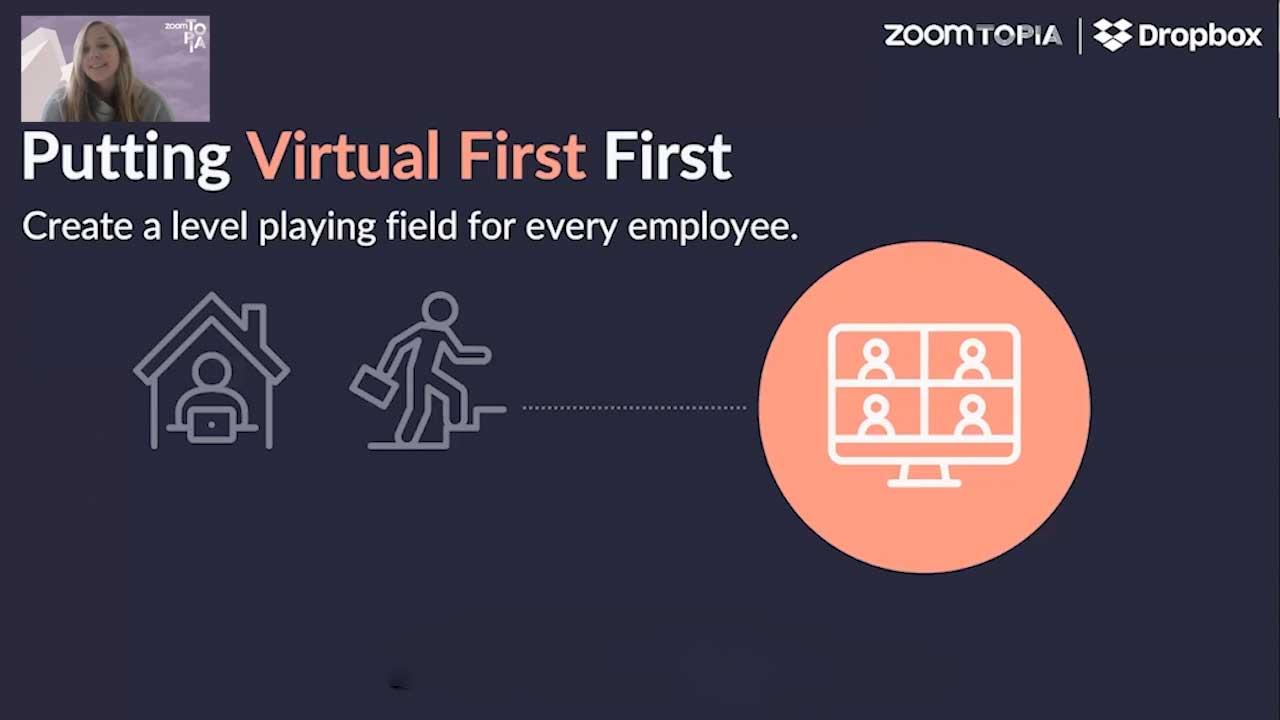Article
Your 9-to-5 job doesn’t have to be 9 to 5 anymore
Asynchronous work means the job can get done any time, not just during “work hours.”

When the pandemic hit, many of us found ourselves working all sorts of strange hours. Being able to walk to the “office” one minute before the first Zoom meeting of the day meant never enduring commute-induced lateness. It also allowed us to better meet our kids’ schedules or take a little “me time” in the middle of the day.
One of the big takeaways from this shift to remote work was that accommodating employees’ timelines helps keep them motivated, engaged, and empowered. And we learned that, perhaps counterintuitively, people can be more productive in less time.
It’s time to rethink the workday
Going back to the standard, eight-hours-in-a-row workday isn’t the only way forward. If you’re considering how to get your organization back to the office without reverting to the old 9-to-5 ways, perhaps a shift in mindset and strategy is in order.
That means going from all-day syncs to asynchronous-by-default.
In our recent Zoomtopia session, Distributed, Not Disjointed. Making Effectiveness Your New Superpower, we dove into asynchronous work. Sure, people’s hours require some overlap in order to get synchronized work done. But in an async workplace built on cloud tools, employees can still offer feedback, make edits to projects, and move work forward—on their own timeline. Here are some of the highlights from our Zoomtopia session:

So instead of keeping that standing Monday morning check-in, let everyone update a shared document on their own terms, especially when the details don’t have to be discussed in real-time.
OK, that sounds great. But can it really work?
Yes it can, and when you watch the full session video, you’ll see how async-by-default is working for distributed employees around the world. You can start putting some of the practices into action right away:
- Divide the day into core collaborative hours and deep work time. Make sure everyone is online and available from 9 until noon, for example, and let the rest of the day be theirs and theirs alone for focused work.
- Reserve meetings for the “3Ds” of discussion, debate and decisions. Most other things can be reviewed and revised asynchronously.
- Encourage midday breaks to keep energy up, and tell folks to set their Slack or IM status accordingly, so they’re not constantly being interrupted.
Another strategic change: Shift from overload to focus. Our lives and our jobs are overwhelming enough, so instead of simply shoveling more tasks out to your team, try to keep things as clear and streamlined as possible. Try these ideas:
- Cut your document in half. Odds are, it says more than it needs to, and you can get the point across without requiring a day’s worth of reading.
- Use plain language, not jargon. This should be self-explanatory. Literally.
- Keep all your team’s documents in one place. A document-sharing and collaboration service is ideal for remote work (or any work, for that matter) because everything is easy to find, comments/edits can easily be shared, and everyone knows how the project is progressing. Learn more about team content and document collaboration.
Here’s how Dropbox is making async happen.
Dropbox creates the tools that make asynchronous work possible, so our own company’s dive into all-remote-all-the-time lends a unique perspective. We built the platform on which remote collaboration, communication, content and comments all live, and now we’re using it to help our team thrive.
Last October, when companies around the world were wondering how and when they’d eventually go back to the office, Dropbox decided to adopt a Virtual First policy. Staying home became the norm, an arrangement that gave us perhaps the greatest product testing vehicle of all time. Every day we use the products we’re building, so we’re constantly tweaking, retesting and improving our solutions—we’re seeing Dropbox like our customers do, and it’s having an incredible influence on product development.
If you want deeper details on what Dropbox learned (and is still learning) about finding new efficiencies, better work-life balance, and more engagement company-wide through virtual-first work, check out the full session video for Distributed, Not Disjointed. Making Effectiveness Your New Superpower.
